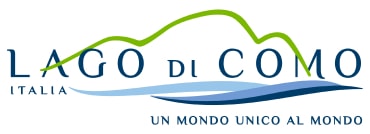Short History of Bellagio
Bellagio was already famous in the Roman era
Its enchanting and strategic position has written its history
Holidays in Bellagio date back to ancient history.
The first person to leave a record of his stays in this spot was Pliny the Younger in the first century A.D. He owned two villas on the lake where he combined studying and writing with hunting and fishing. Over the centuries, the strategic position at the centre of the lake made Bellagio important enough to be the object of contention many times.
For a long period during medieval times, the village was dominated by nearby Como, but in 1100, it was already a free commune with its own court. However, in 1154, Frederick Barbarossa brought it under allegiance to Como once more. In the 13th century, Bellagio became part of the Duchy of Milan under the Visconti family. The town was responsible for the surveillance of the lake, and for this reason the Magistrate known as ‘Capitano del Lario’, was armed with two boats, each with twenty oarsmen and sixty soldiers, which he used to patrol the waters against piracy and smugglers.
Around Bellagio and its Capitano an organization known as the “Lakeland Community” grew up to support the interests of the lakeside villages. This community remained active for two centuries. During the 16th century, the Spanish took over as rulers of Lombardy and their domination of Bellagio lasted for two hundred years: this period was remembered in Alessandro Manzoni’s masterpiece “I Promessi Sposi” (The Betrothed). Suggestive reminders of the Spanish domination are the “Derta” steps, which connect Guggiate to San Primo.
The Bellagio fiefdom was bought in 1535 by the Sfondrati family who remained in charge of the area until 1788 when the last count died without an heir. At this time, the rights to the area were taken over by the Serbelloni family. Bellagio’s more recent history, from Napoleonic times to the present day, is linked to its enchanting position and to the growing importance of tourism since the middle of the 18th century. A large number of splendid villas with fabulous parks sprang up on the promontory and the Lombard aristocracy would spend long periods here surrounded by illustrious guests, including many artists and poets. During the 19th century, Bellagio became a court of considerable importance despite the fact that it was very difficult to reach the town in any way other than by crossing the lake. Towards the end of the century, the first luxury hotels were opened, offering the same levels of elegance and comfort as the finest hotels in Europe.The Bellagio Hotel was the first hotel to be opened in 1825, the result of the transformation of Abbondio Genazzini’s old inn, which was then later transformed once again into Lake Como’s first real hotel, the Genazzini Hotel. Following this example several splendid hotels sprang up in a short time, many of which are still open today and several of which are still run by the founding families, such as the Hotel Florence (1858 – now the Hotel Du Lac), the Hotel de la Grande Bretagne (1861), a new Hotel Florence (built in 1870 on the site of what had been the residence of the Capitano del Lario), and the Grand Hotel Bellagio (1872 – now the Grand Hotel Villa Serbelloni with 200 rooms and 30 lounges). In 1888, the three major hotels (Genazzini, Grande Bretagne and Grande Hotel Bellagio) introduced electric lighting to the town as a substitute for gas. The finest family villas of the area followed only much later. During the Belle Époque Bellagio offered three working theatres, at a time when Milan could only boast two!
Almost all of the most illustrious names of the last two centuries have signed the guest books of Bellagio: the great composer Franz Listz passed a long and enchanted honeymoon here with the Countess D’Agoult, and it was here that he wrote some of his immortal works. There was also no shortage of crowned heads: Maximillian I, the Empress of Russia Maria Feodorovna, the Emperors of Austria Franz I, Ferdinand and Franz Joseph, Kaiser Wilhelm, the King of Albania, Leopold I of Belgium, Queen Mary of Romania, Umberto and Margherita of Savoy and King Farouk of Egypt.
Many Italian and foreign artists and writers also came to stay, including Giuseppe Parini, Ippolito Pindemonte, Alessandro Manzoni, Tommaso Grossi, Ippolito Nievo, Stendhal, Gustave Flaubert and Filippo Tommaso Marinetti. More recently, many famous film stars have fallen under the spell of Bellagio: Mary Pickford, Douglas Fairbanks, Otto Fischer, Maria Schell, Clark Gable, Robert Mitchum, Romy Schneider and Philippe Noiret (who came to film “A Woman at the Window”), Al Pacino and Marthe Keller (for “Bobby Deerfield”), Alberto Sordi, George Lucas, Natalie Portman, Ewan McGregor, Hyden Christensen, Robert De Niro and George Clooney.


